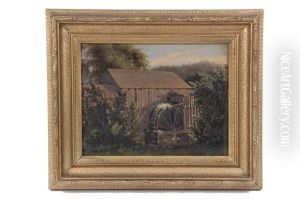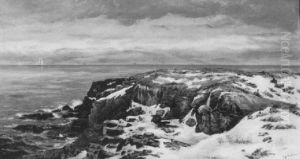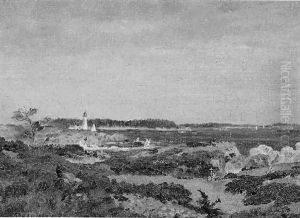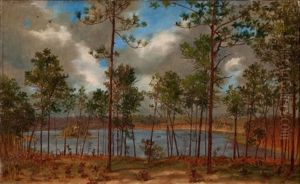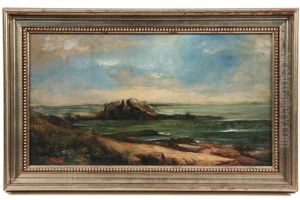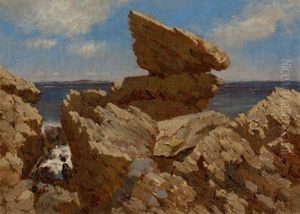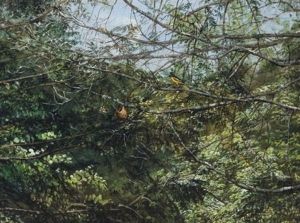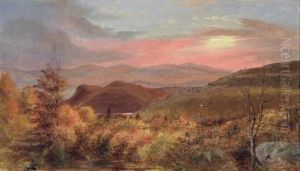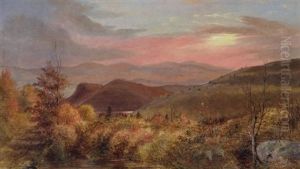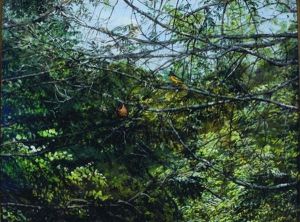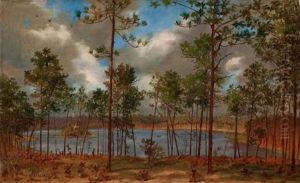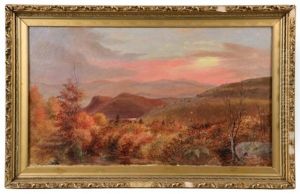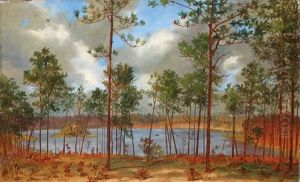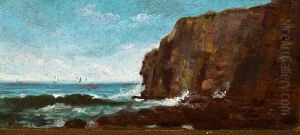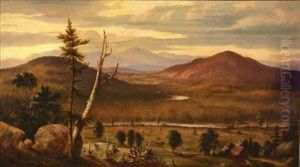John Bradley Hudson Paintings
John Bradley Hudson, Jr., was an American painter known for his detailed landscapes and marine subjects, capturing the serene beauty of the American Northeast, especially New England. Born in 1832, Hudson's artistic journey began in an era when the United States was undergoing significant cultural and geographical expansion, contributing to the burgeoning interest in capturing its landscapes and natural beauty. His works are a testament to the 19th-century American landscape tradition, reflecting a keen observation of nature combined with a refined technique.
Hudson's life was largely spent in pursuit of depicting the tranquility and untouched aspects of nature. While specific details about his early life and artistic training are less documented compared to his contemporaries, it is evident through his body of work that he possessed a profound understanding of light, color, and composition, characteristics that were highly valued in the landscape painting genre of his time. He was part of a generation of artists who were influenced by the Hudson River School, though he developed a distinct style that emphasized subtler color palettes and meticulous attention to detail.
Throughout his career, Hudson exhibited a deep appreciation for the landscapes of New England, from its rugged coastlines to its serene inland vistas. His paintings often featured scenes devoid of human presence, focusing instead on the timeless and enduring aspects of nature. This approach allowed viewers to engage in a more personal and introspective interaction with his work, inviting them to contemplate the natural world's beauty and grandeur.
John Bradley Hudson, Jr., passed away in 1903, leaving behind a legacy that has continued to captivate art enthusiasts and collectors. His paintings are not only valuable for their aesthetic appeal but also serve as historical documents that offer insights into America's environmental and cultural landscapes during the 19th century. Through his art, Hudson contributed to a larger narrative of American identity, one that revered the natural world and sought to preserve its splendor for future generations.

